► We drive the original 1980s Honda NSX
► Developed by Ayrton Senna, no less
► Three decades on, is it still any good?
It’s a late summer’s afternoon in 1998, and on a 15-inch porthole-like telly, a bright yellow Honda NSX is hurtling round Trial Mountain in full 32-bit glory. It’s the car that was developed by Ayrton Senna and the gameplay was enough to imprint Honda’s first supercar onto my psyche. After a few virtual laps with the NSX responding to every nudge of the analogue sticks, I was thoroughly hooked.
You can imagine my excitement then, when I recently received an email from Honda, inviting me over to Spain for a heritage event, where the original 1980s NSX would take pride of place. Did it perform as well on real roads as well as the pixelated ones on my PlayStation?
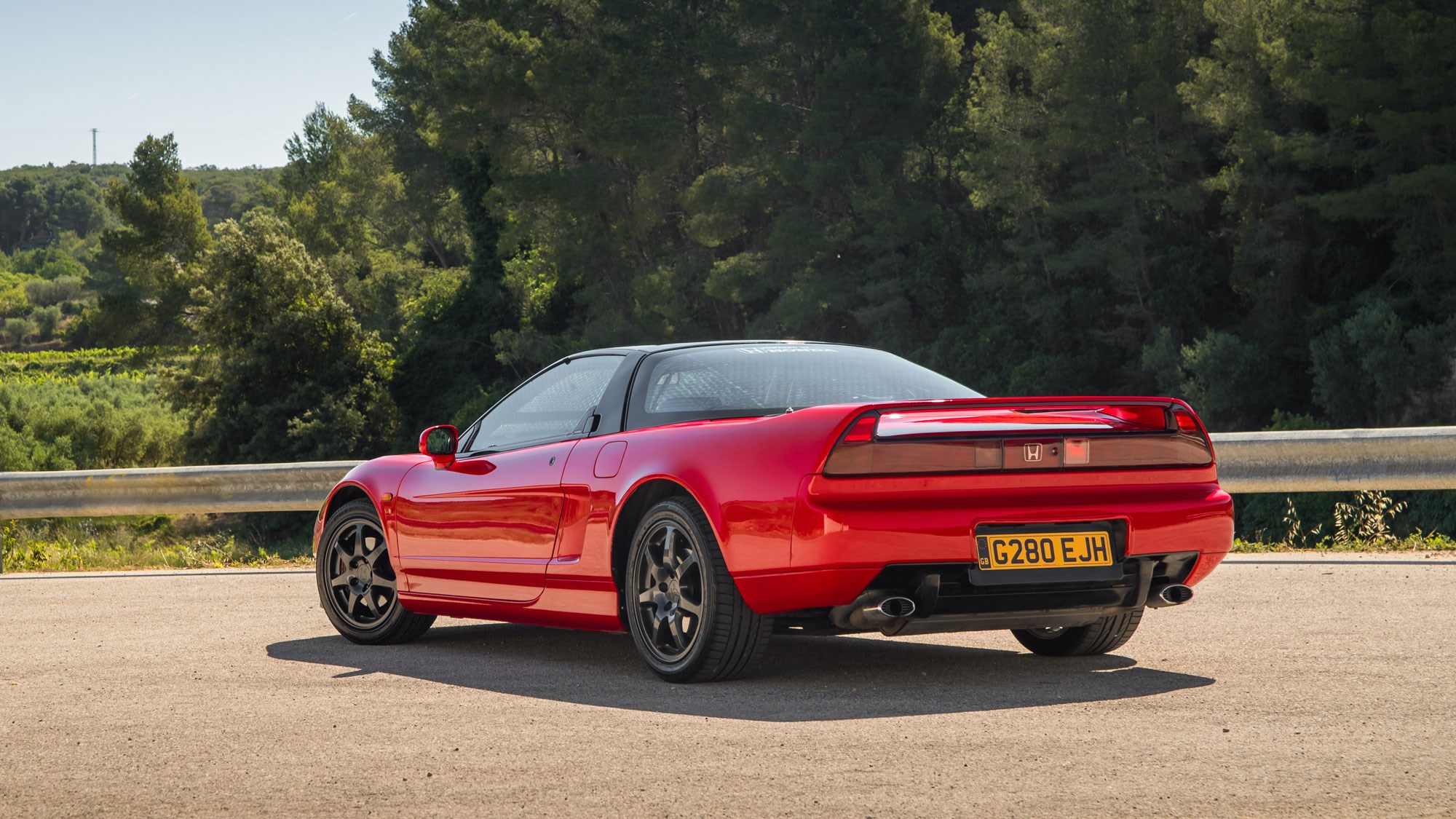
What was so different about the original Honda NSX?
To understand why Honda made the NSX, and to appreciate why it had such a massive cultural and technical impact, we need to remind ourselves what else the car maker was selling in the late 1980s.
There was some sporting everyday machinery – the Prelude and the Integra – but compared to its motorsport efforts, powering Lotus and Williams Formula One cars, Honda’s racing pedigree wasn’t immediately obvious from a look in its showrooms.
To bridge the gap, Honda needed to build an out-and-out supercar, and it needed a famous F1 name to fly the flag. The NSX was the car, and Ayrton Senna was the celebrity endorsement. In reality, the three-time world champion had very little involvement in the car’s design, but he did shakedown the prototype cars and fed his insights back to Honda’s development engineers.
Ferrari was the obvious target in Honda’s crosshairs when the NSX was developed. The theory was simple: take the 328 (and later the 348) and make a lighter and nimbler alternative. And because it was a Honda, it was also packed with technology: the cockpit was inspired by the F16 Falcon fighter jet and the mid-mounted V6 engine was only the second ever to use the now legendary VTEC variable-valve system.
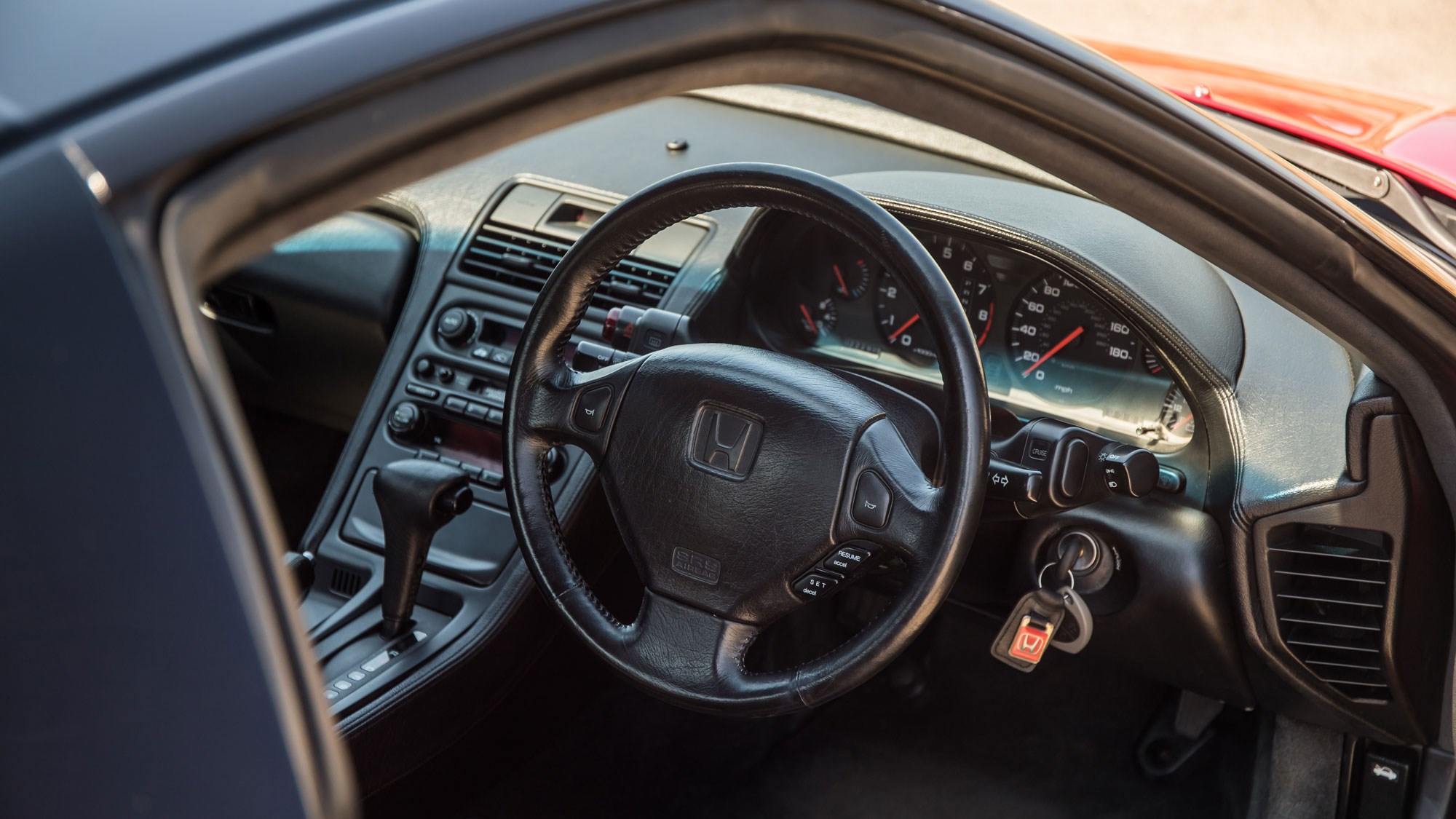
The NSX we drove is not only the oldest surviving example in the UK, it’s also an early pre-production car, which the great Senna himself is said to have driven. His nephew Bruno has also had the pleasure and signed the bootlid to prove it. That’s the good news… the bad news is that it was an automatic.
And what about inside?
Despite its hefty £60,000 price tag in 1990, the interior of the NSX isn’t exactly opulent – it’s typical of Japanese makers of the era. There’s a lot of black plastic, and then even more black plastic. You do get stitched leather covering the padded dash top, door cards, gearknob and steering wheel to lift things a little.
What’s surprising about a car that looks as advanced as this on the outside, is just how analogue it is on the inside. The exterior styling is pretty timeless, so when you’re greeted by a bank of dials with bright orange needles and rocker switches, you’re suddenly reminded that this car is a product of the early 1990s.
That fighter-jet inspired glasshouse gives you excellent visibility although in this 30+ degree heat, it also acts like a greenhouse. As we stir the V6 into life, our first consideration is getting the air-con blasting out some icy relief.
And can you go some in an original Honda NSX?
The short answer is yes, but it’s not as quick as you’d expect. Perhaps those looks make promises that the V6 can’t quite match – or (more likely) that transmission blunts the experience. We soon learn that leaving it to select the gears is a mistake, so we override it with the usual manual shift settings, holding onto the lower ratios for longer.
The main problem comes from having to wind that V6 up into its working rev range. It takes so long that by the time you’re making decent progress, you have to brake again for the next corner. Once in the legendary VTEC range (over 5800rpm) progress is swift rather than rampant. It’s not the same VTEC delivery as later Civic Type Rs; there are no huge dollops of adrenaline above the cam crossover threshold, just a smooth accumulation of additional performance.
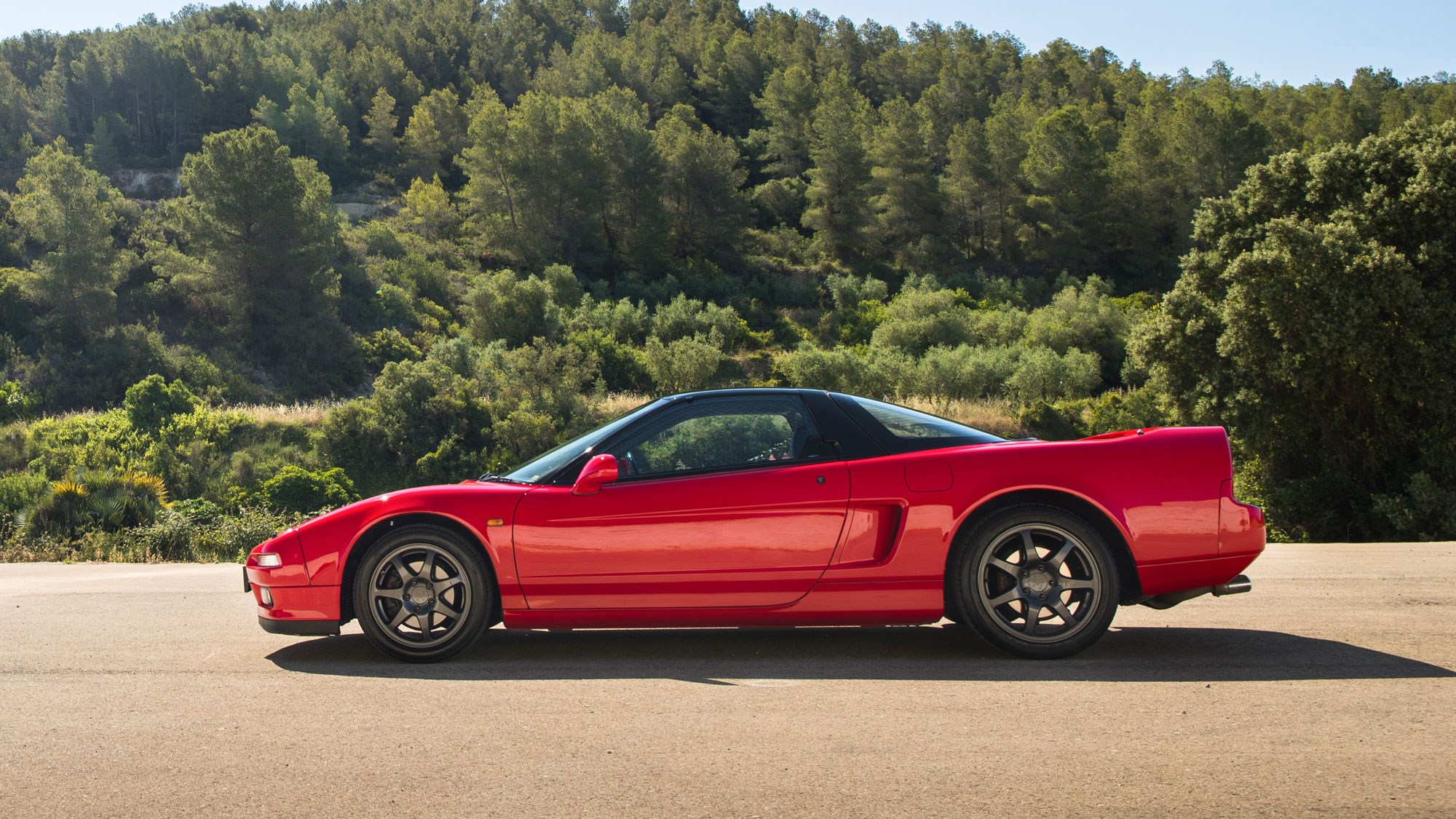
Keeping weight to a minimum was the crucial concern for Honda engineers, so the NSX makes extensive use of aluminium body panels. The attention to reducing mass even extends to the spare wheel jack, which is made from alloy rather than steel. That means it tips the scales at a still light-ish 1365kg, and with 270bhp on tap the NSX flies on the right road.
Honda NSX 1:24 Tamiya model
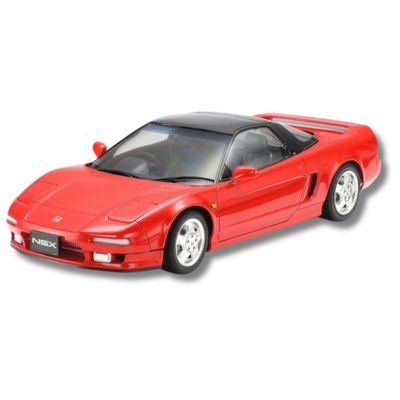
How’s the handling?
With its all-alloy engine mounted square in the middle, the NSX is an utter joy to thread through these fast sweeping Spanish mountain roads. Turn-in is quick and precise with plenty of feedback through the wheel letting you know what the lighter end of the car is doing. Getting on the power early makes the NSX squat and tighten its line. Try and be greedy and do this too early and the front begins to yield to the merest hint of understeer. Get it right and power just before the apex and the NSX tracks perfectly, never deviating from your chosen line.
Best practice on these narrow roads with this admittedly senseless transmission, is to pile into the corner braking late, let the Honda’s balance shift forward, and then hammer the throttle feeling the weight transfer back to the rear. After that, it’s just about leaning on the car’s perfect balance.
It’s hugely rewarding and at no point feels like you’re in danger. When we push our luck too far, the NSX gives a modest four-wheel drift into the middle of the road before grip reasserts itself and we ease off.
It might not have ultimate supercar pace on straights – especially when hampered by that automatic transmission – but the NSX more than makes up for it in the corners. Flat, predictable weight transfer feeds confidence with every bend, and in no time at all we’re dispatching corners like we’re back at Trial Mountain.
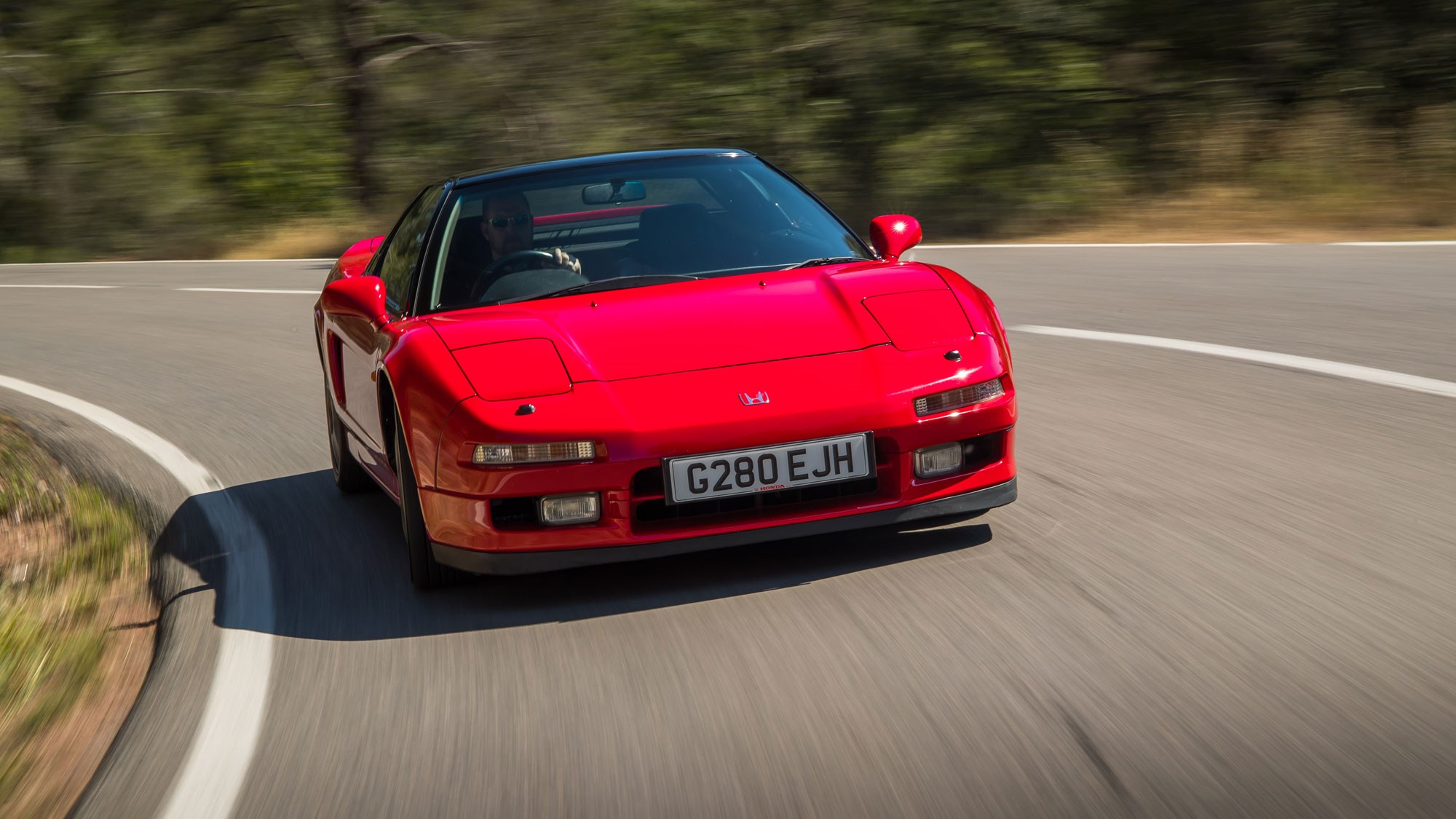
Honda NSX (1988): verdict
Even with this old clunky automatic transmission it’s impossible to hide the NSX’s immense abilities. Wound up and attacking the corners at full pace, the chassis feels taut and yet forgiving. It gives you the scope to learn it, without punishing you for your lack of talent. It’s amazing to think this car is nearly three decades old.
The NSX’s greatest strength is probably its performance on windier, more technical roads, and in many ways is the equal of contemporary great the Lotus Esprit. However, it certainly trumps the Norfolk product in reliability and quality of construction.
When you simply want to get home without any fuss, the NSX settles down and becomes a useable and comfortable cruiser. Quite the party trick. But all I can think about now is getting up at dawn, beating the traffic and taking on these mountain roads one more time.
Read more Honda reviews by CAR magazine